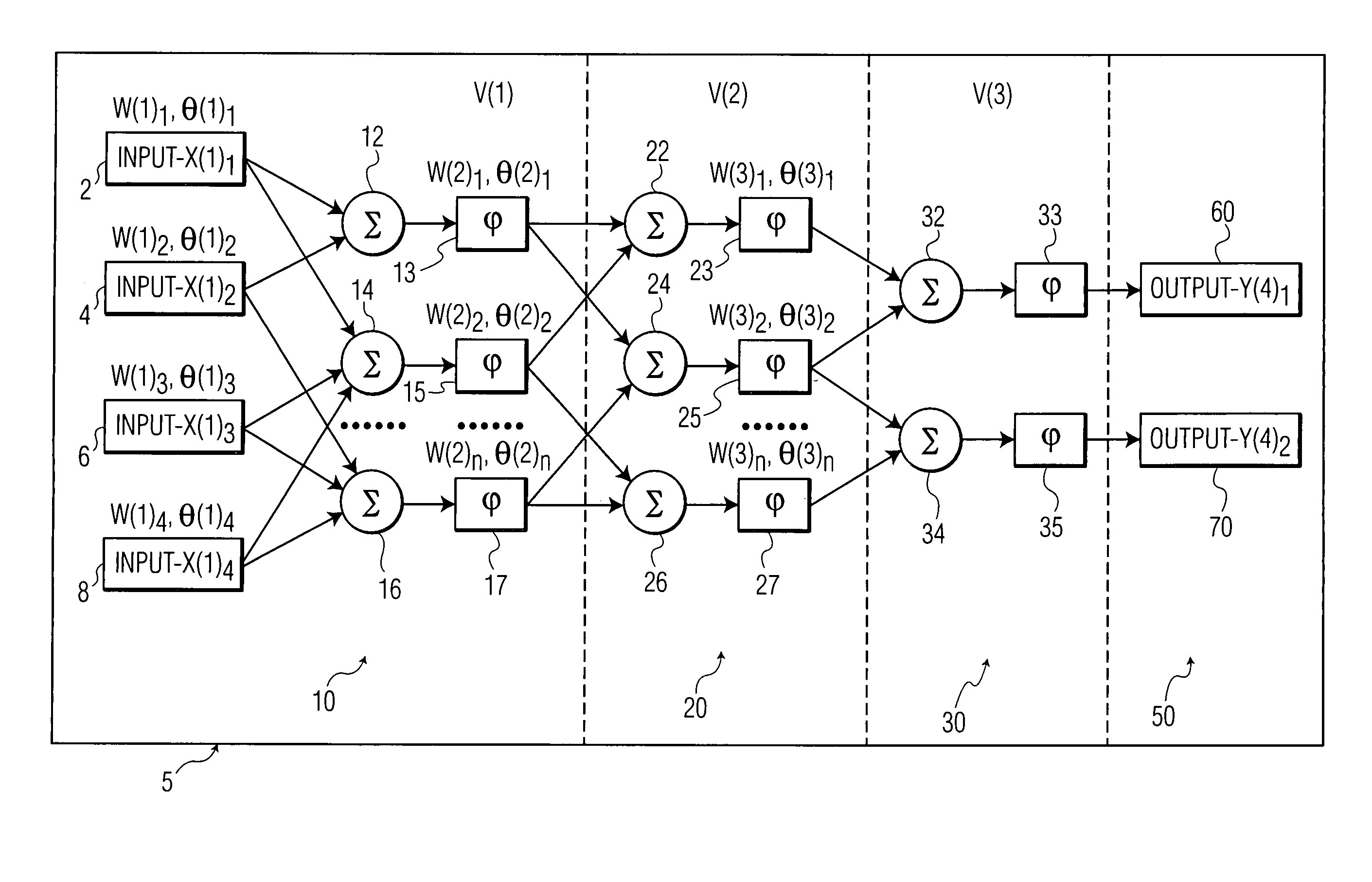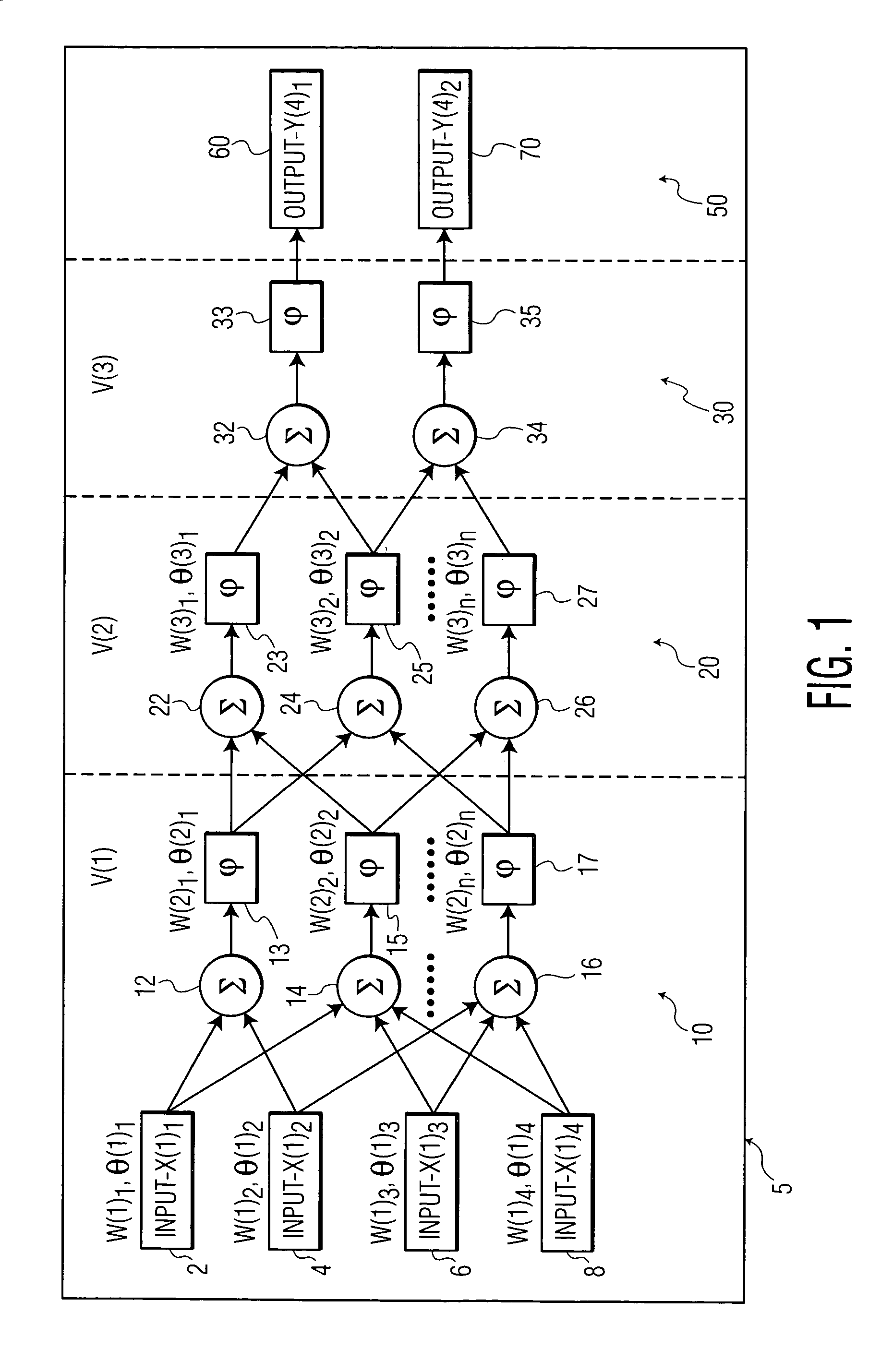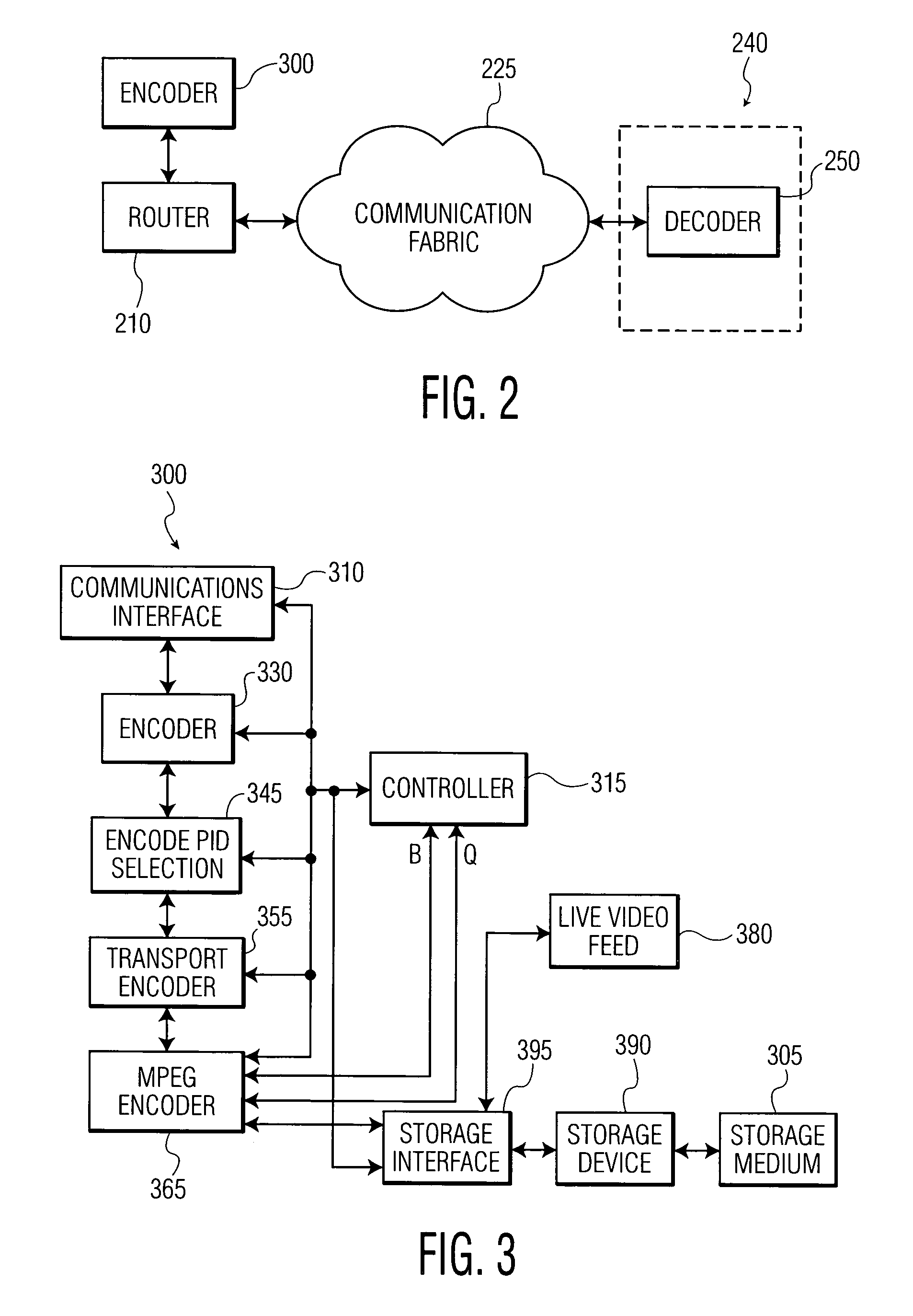Dynamic rate adaptation using neural networks for transmitting video data
a neural network and dynamic rate technology, applied in the field of encoding video based transmissions, can solve problems such as quality problems, discontinuity of displayed events, and computational complexity of encoding/decoding data, and achieve the effects of improving the quality of video services, reducing the complexity of encoding/decoding data, and improving the accuracy of encoding
- Summary
- Abstract
- Description
- Claims
- Application Information
AI Technical Summary
Benefits of technology
Problems solved by technology
Method used
Image
Examples
Embodiment Construction
[0014]In FIG. 1, a technique for training a neural network is shown. Typically, a neural network is a mathematical model, implemented in a computer program as SIMULINK™ or MATHLAB™ that models a system based upon various inputs that after a certain number of layers leads to an output. A change in the input, therefore affects the output using the different nodes and layers present in a neural network.
[0015]Neural networks are used when attempting to model a system without having knowledge of all of the variables and equations representing how a system works. The neural network benefits from the ability of being able to be trained. This training proceeds with specific values being used as input values for the neural network. The neural network is then “taught” to give specific output values corresponding to the specific input values. Once this process is repeated a number of times with other “known” input values and output values, a set of input values is fed into the neural network. ...
PUM
 Login to View More
Login to View More Abstract
Description
Claims
Application Information
 Login to View More
Login to View More - R&D
- Intellectual Property
- Life Sciences
- Materials
- Tech Scout
- Unparalleled Data Quality
- Higher Quality Content
- 60% Fewer Hallucinations
Browse by: Latest US Patents, China's latest patents, Technical Efficacy Thesaurus, Application Domain, Technology Topic, Popular Technical Reports.
© 2025 PatSnap. All rights reserved.Legal|Privacy policy|Modern Slavery Act Transparency Statement|Sitemap|About US| Contact US: help@patsnap.com



